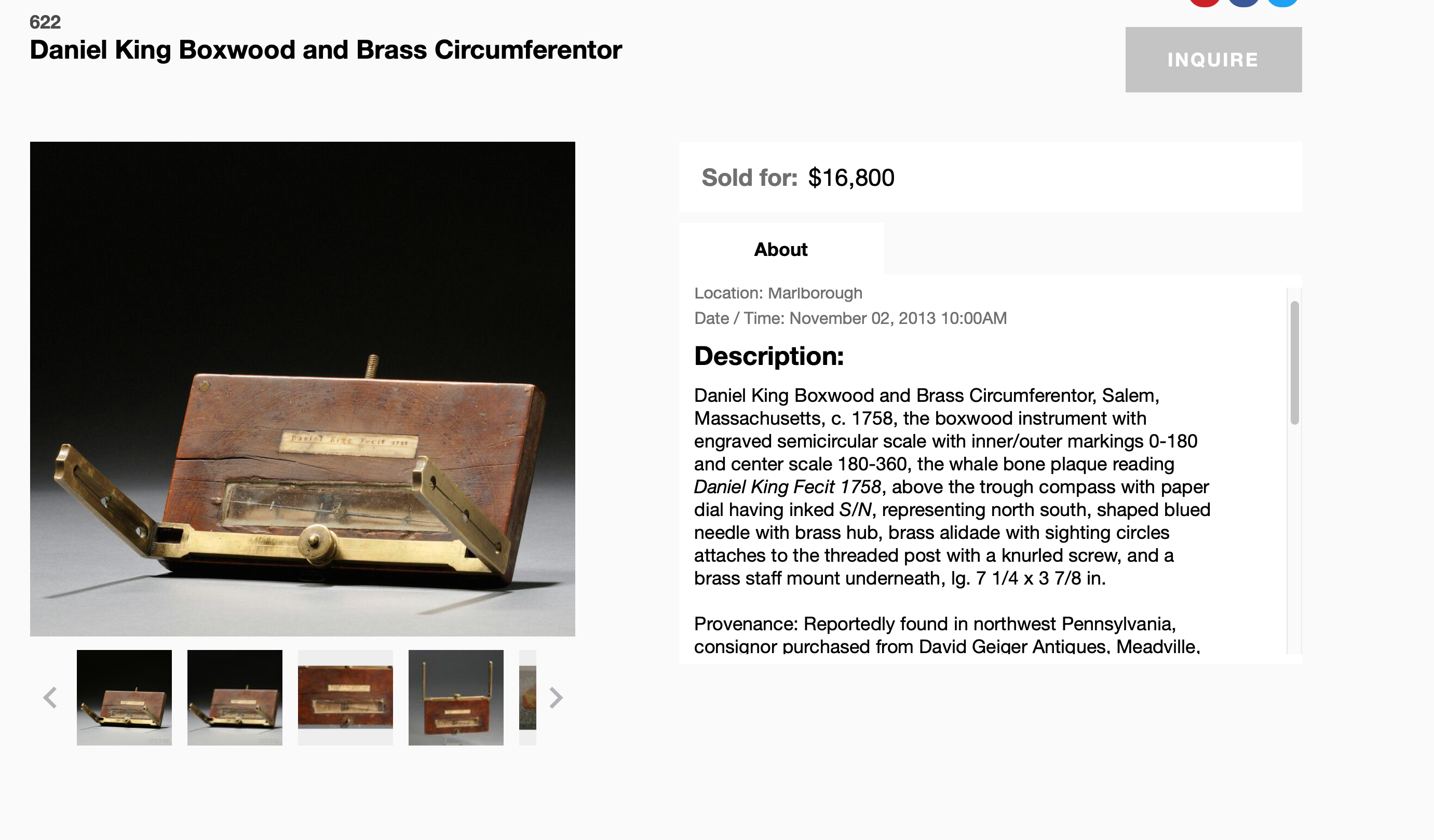
Daniel King Semi Circumferentor - Circa 1758 - Sold at Skinners for $16,800 in 2013
Collecting American Made Semicirlces (aka Semi-Circumferentors)
Colonial and Early American surveyors used far more Semi-Circumferentors than most current collectors realize.
The collector books and articles rarely mention Semi-Circumferentors - so I assumed that the Semis rated no more than a footnote when it came to the history of surveying instruments made and used in America. But when I started looking at newspapers from the colonial and early American period, I was surprised to find advertisements by instrument makers offering to sell Semicircles. I even found an advertisement by a teacher offering instructions on how to survey with circumferentors, theodolites and semicircles. And I was really surprised when I started looking for dealer offerings and auctions listing Semi-Circumferentors for sale over the last 30 years or so. I expected to find just a handful offered for sale - I found more than 40 Semi-Circumferentors offered for sale after spending just a handful of hours looking thru old catalogues and internet listings. This research tells me that Semis had more marketshare back in the day than collectors suspect.
SemiCircles were very popular in France, where they were called Graphometers. You will find some beautifully engraved Graphometers with a simple Google search. SemiCircles seemed to be less popular in Britain, however, where the plane table and theodolite (full-circle) seemed to dominate the surveying scene.
Semi-Circumferentors offered certain advantages to colonial and early Americans. The Semis could measure independently of the needle for one thing, which was important if there was any local attractions that made surveying with the needle unreliable. And since Semis could be made with much less brass than a brass compass, Semis were also a rather economical survey instrument. Only a wood compass would have been cheaper.
Interestingly, most of the Semi-Circumferentors I've come across are unsigned. And there are very few Semis that have much in way of artistic engraving. To me, this explains the very wide collector price differentials between generic Semi-Circumferentors and those that are signed, dated and/or engraved.
NOMENCLATURE
If you research these instruments, or look to buy them, you are going to run into a nomenclature problem. Auction houses and others have shifted some definitions, which makes looking for these instruments a bit like playing Whack-A-Mole. Here are the definitions that surveyors and makers used back in the day…
Semicircle - Half a full circle; 180 degrees, and with either just 2 moveable sights or 2 fixed and 2 moveable sights. Could measure angles independently of the Needle.
Semi-Circumferentor - Now just another name for a semicircle. A couple of UK Makers referred to a semicircle as a semi-circumferentor around 1900 or so. Charles Smart and Bedini picked up on the name semi-circumferentor and popularized that name in America. The name is misleading however, because a circumferentor originally referred to a compass that could only determine angles by reference to the magnetic needle.
Graphometer - the French name for a Semicircle.
See the 1982 Whipple Museum Catalogue (Catalogue Cover) for a short explanation of the term "Semicircle".
So if you are researching these instruments in old books and newspapers, search for "Semicircles". If you are looking thru post 1950 materials and auction listings, search for "SemiCircumferentors" or "SemiCircumferenters".
The Different Forms of the Semi-Circumferentor
The Semicircle was an offshoot of the full-circle theodolite instrument (which was invented in the 16th century). The earliest SemiCircles likely did not have a magnetic compass in it. Semicircles could either feature just 2 movable sights or 2 fixed sights and 2 moveable sights.
The French really embraced the SemiCircle, and called it a Graphometer. A FrenchGraphometer usually has a full compass and often has elaborate engraving. A French Graphometer can be a very beautiful instrument. I suspect a few Graphometers were imported into America early on but it's hard to tell how many. Not a lot though based on how rarely they appear for sale in America. I found an 1822 estate sale advertisement from Louisiana where the sale included a Graphomter. French Graphometers typically have 4 sights.
Very few American made Semi-Circumferentors featured a full compass - most of the Semis offered a trough compass instead pointed to the magnetic north plus or minus a few degrees. And most American made Semis came with just 2 moveable sight.
Early SemiCircle with No Compass
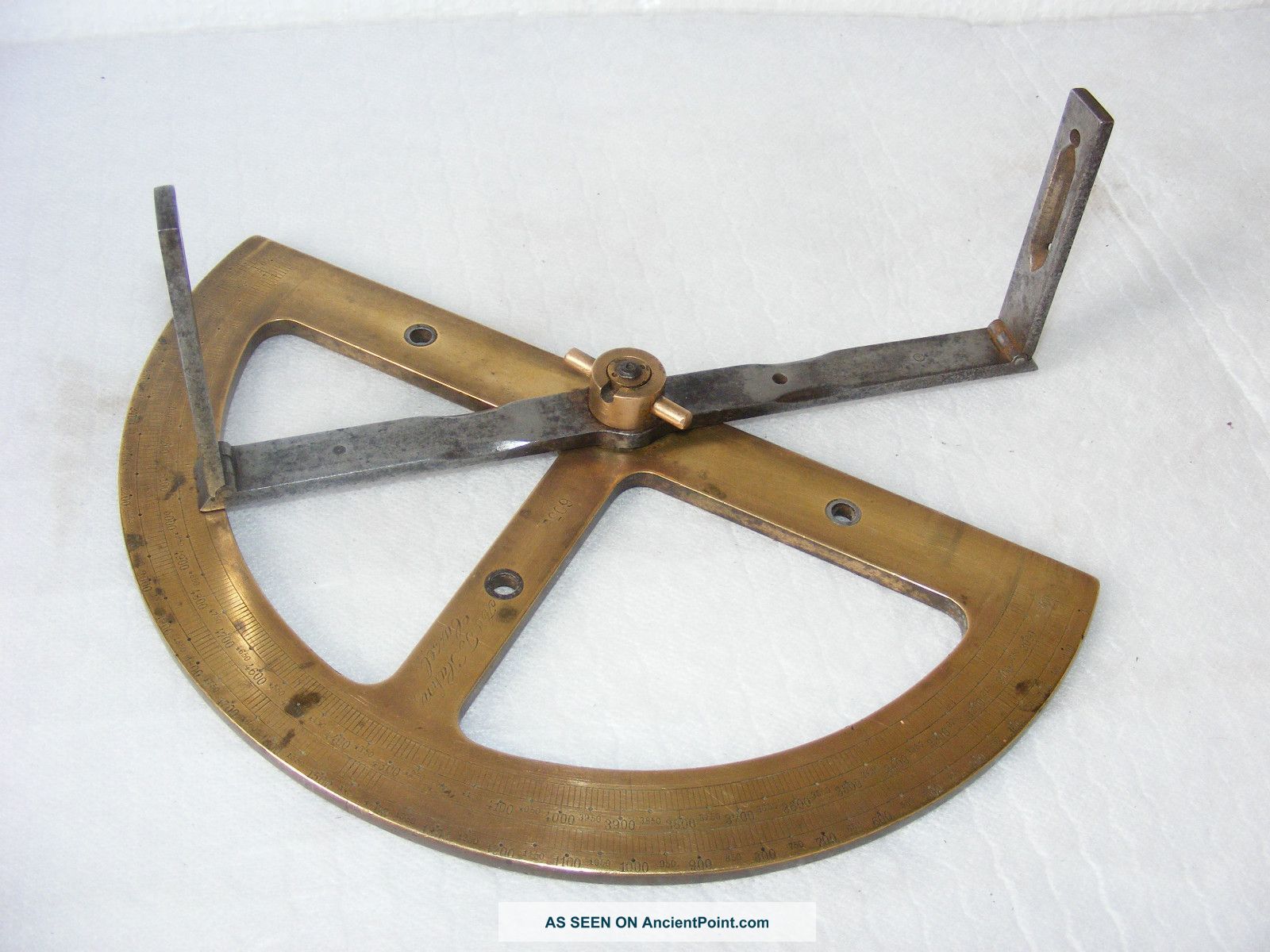
French Graphometer
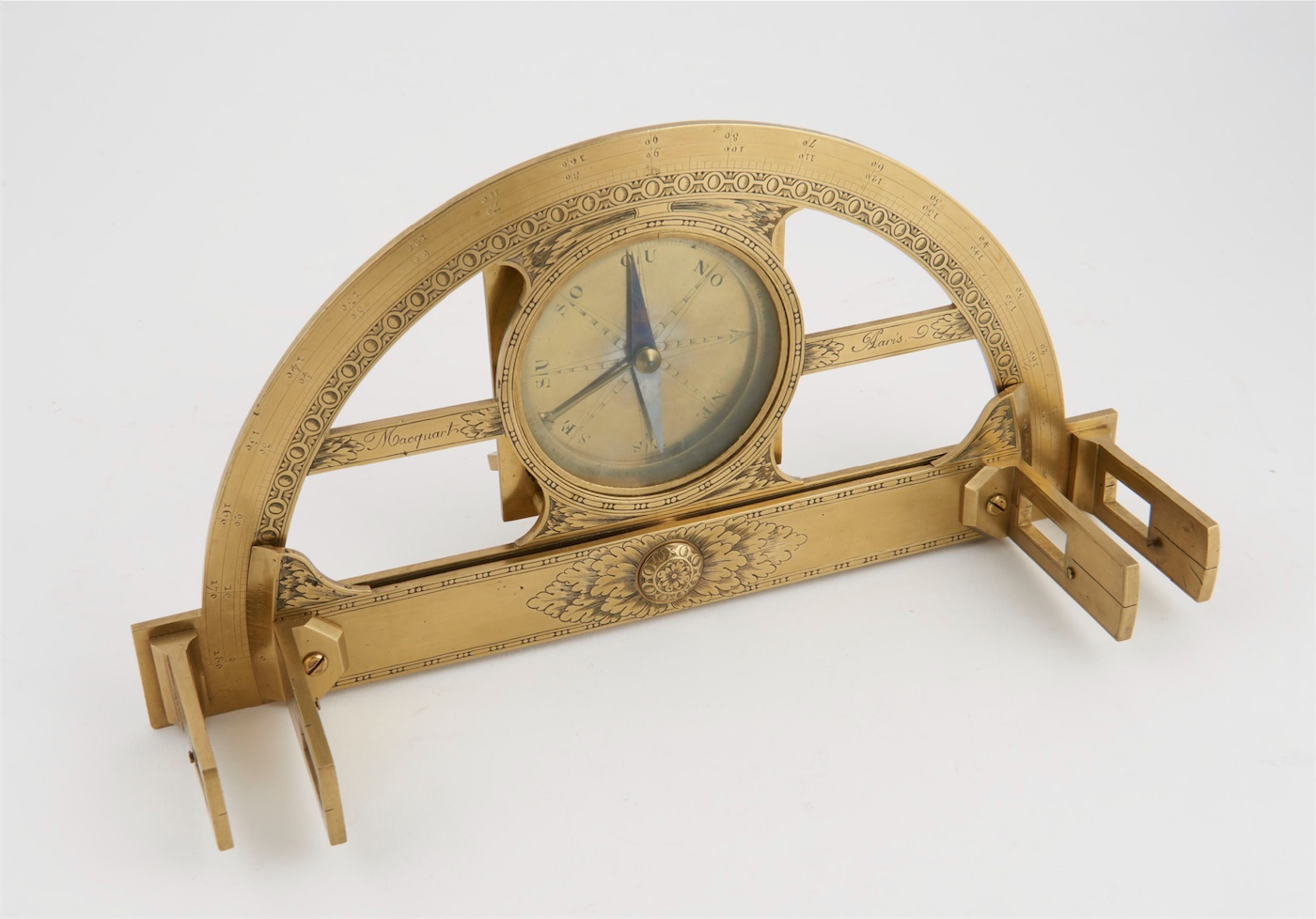
All Brass SemiCircumferentor
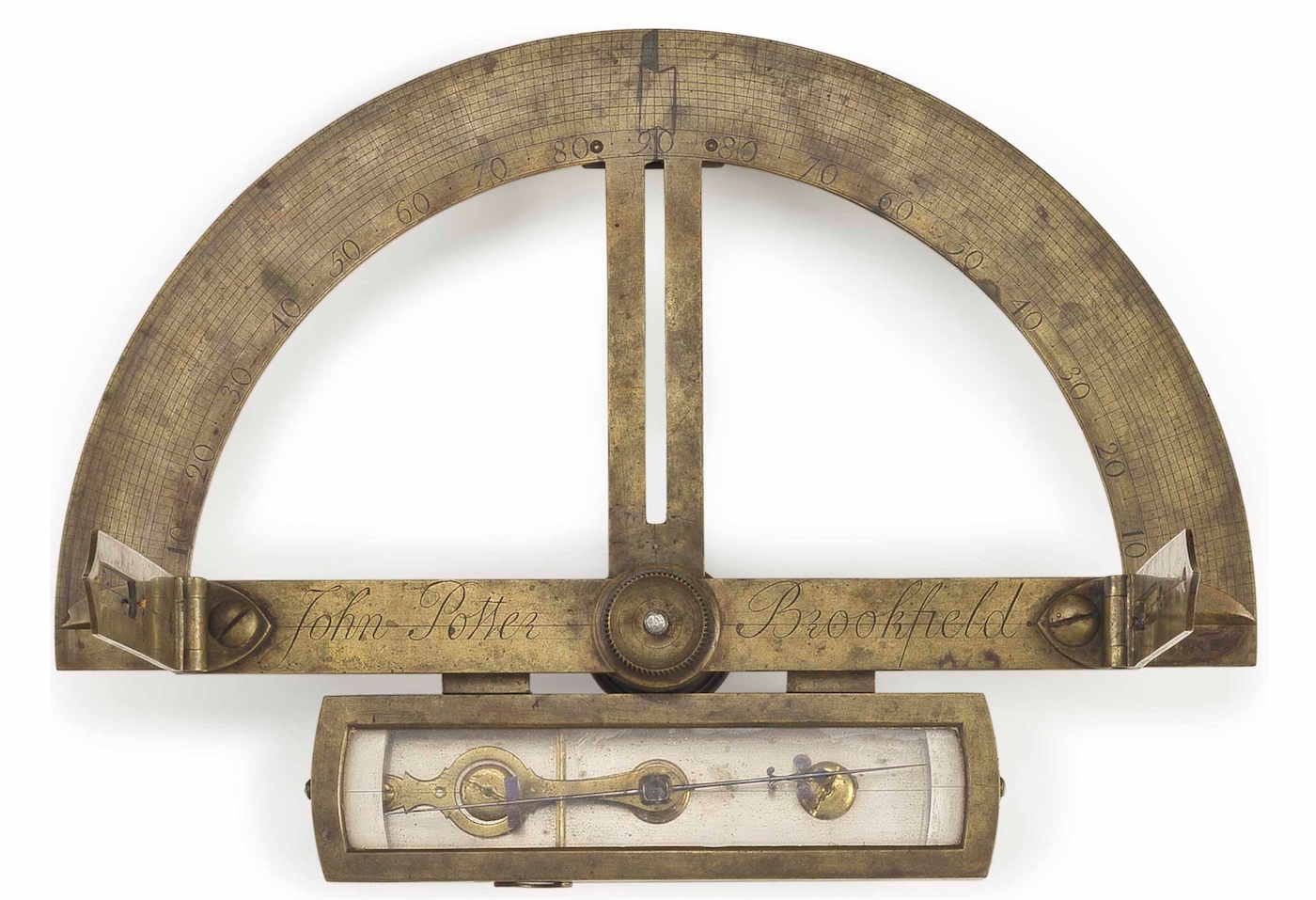
This wonderful 1792 SemiCircumferentor sold for $6875 at a 2014 Christies Auction. Note the Transversal scale on the semicircle - that enabled the reading of divisions within a single degree.
SemiCircumferentor with Brass Alidade But Divided Half Circle on Wood
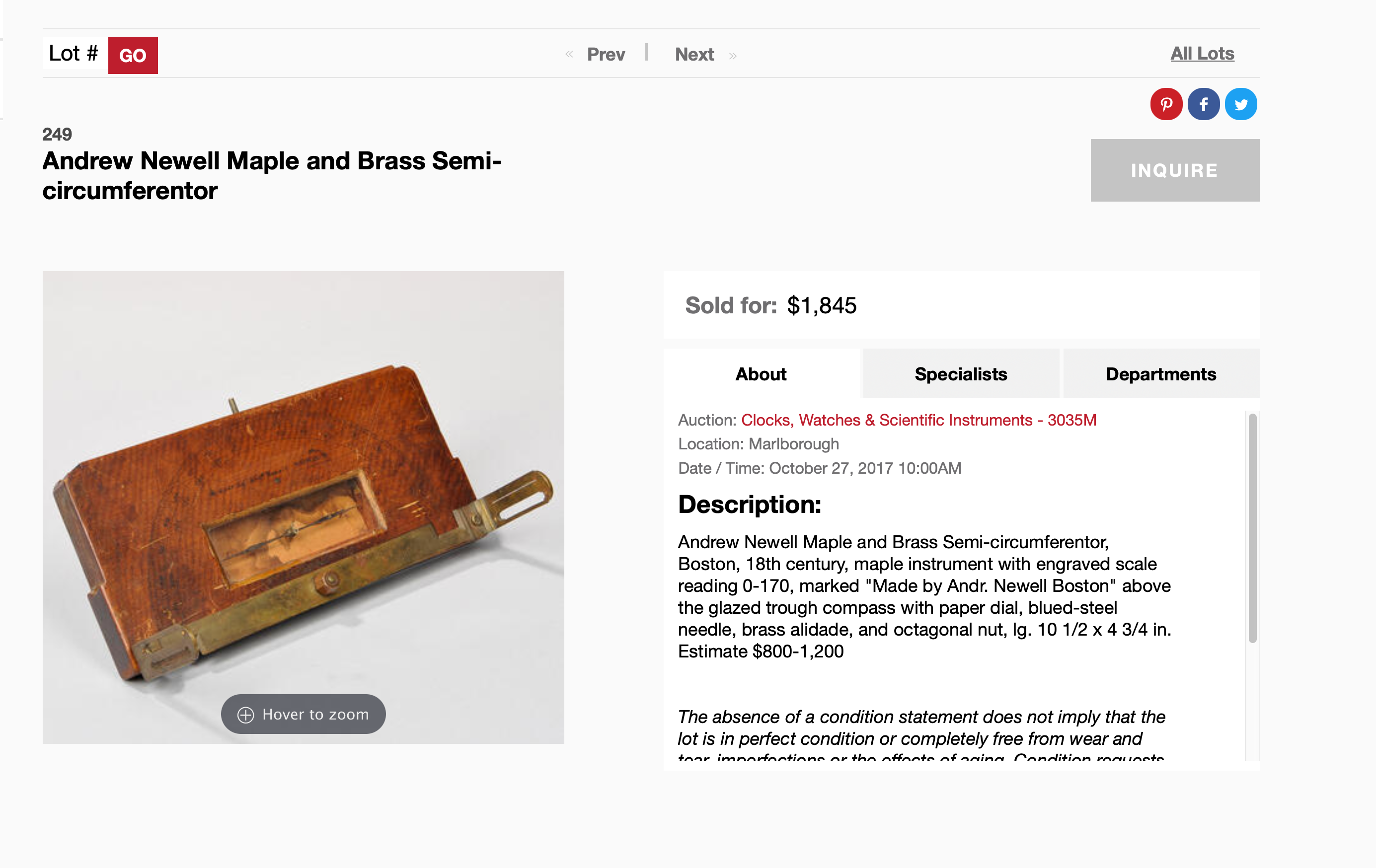
A Semi made by Andrew Newell that sold at a Skinner sale for $1845 in 2017.
SemiCircumferentor with Brass and Wood - Most Common
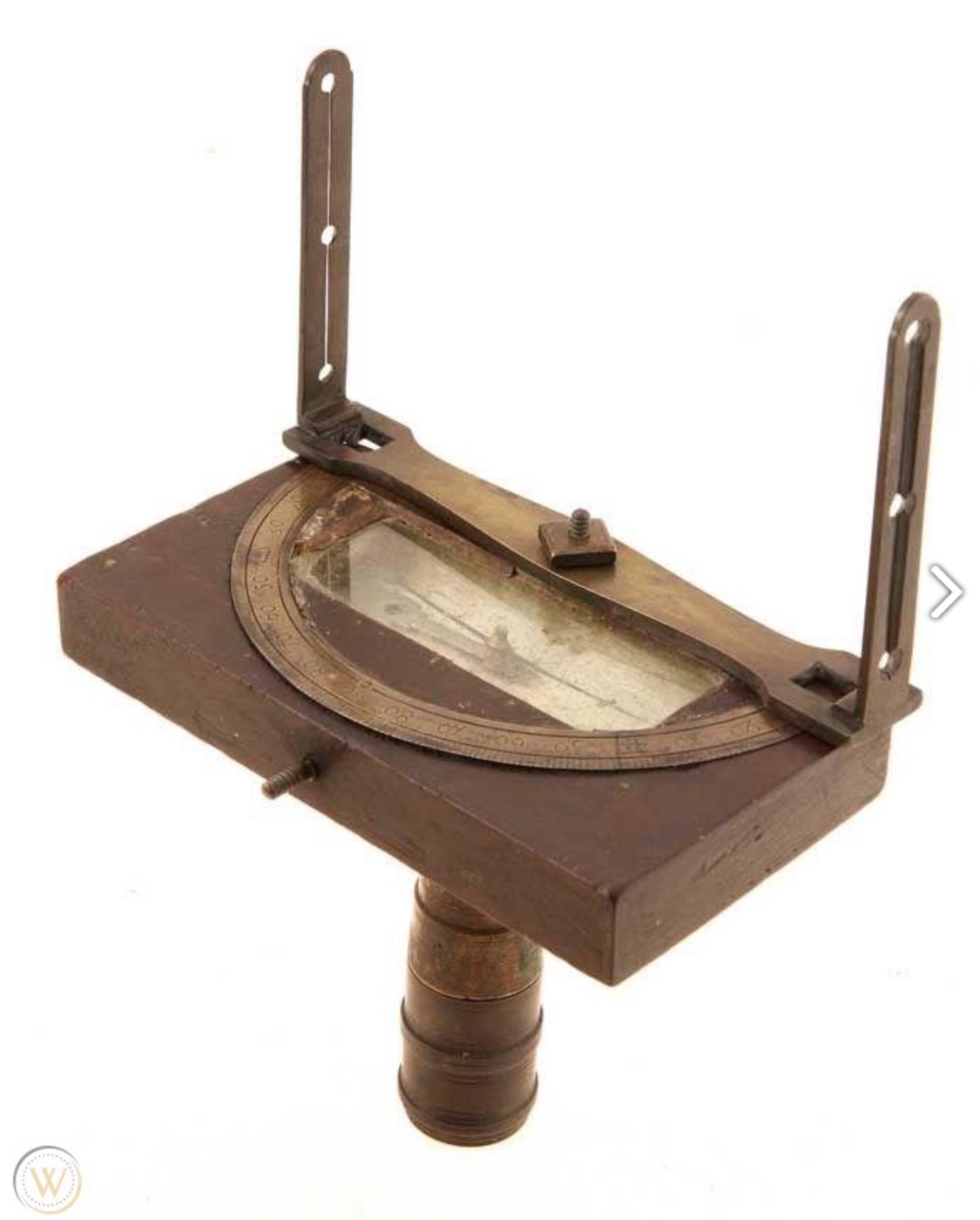
SemiCircumferentor with Brass Plate Covering Wood
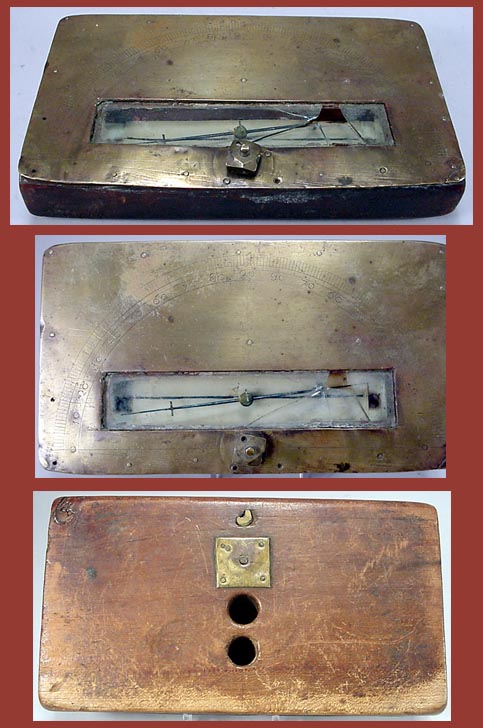
SemiCircumferentor with Vernier
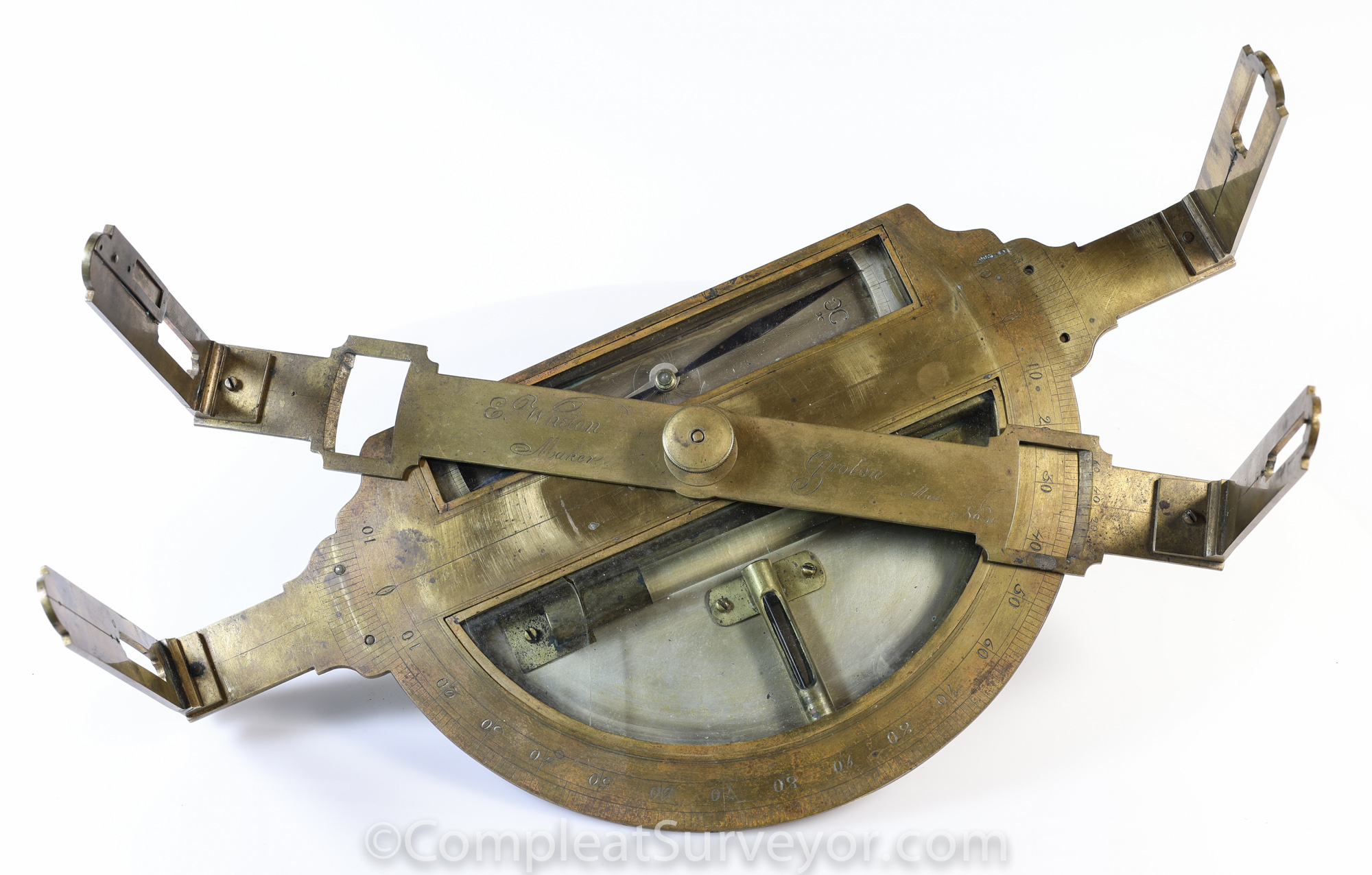
SemiCircumferentor with Transversal
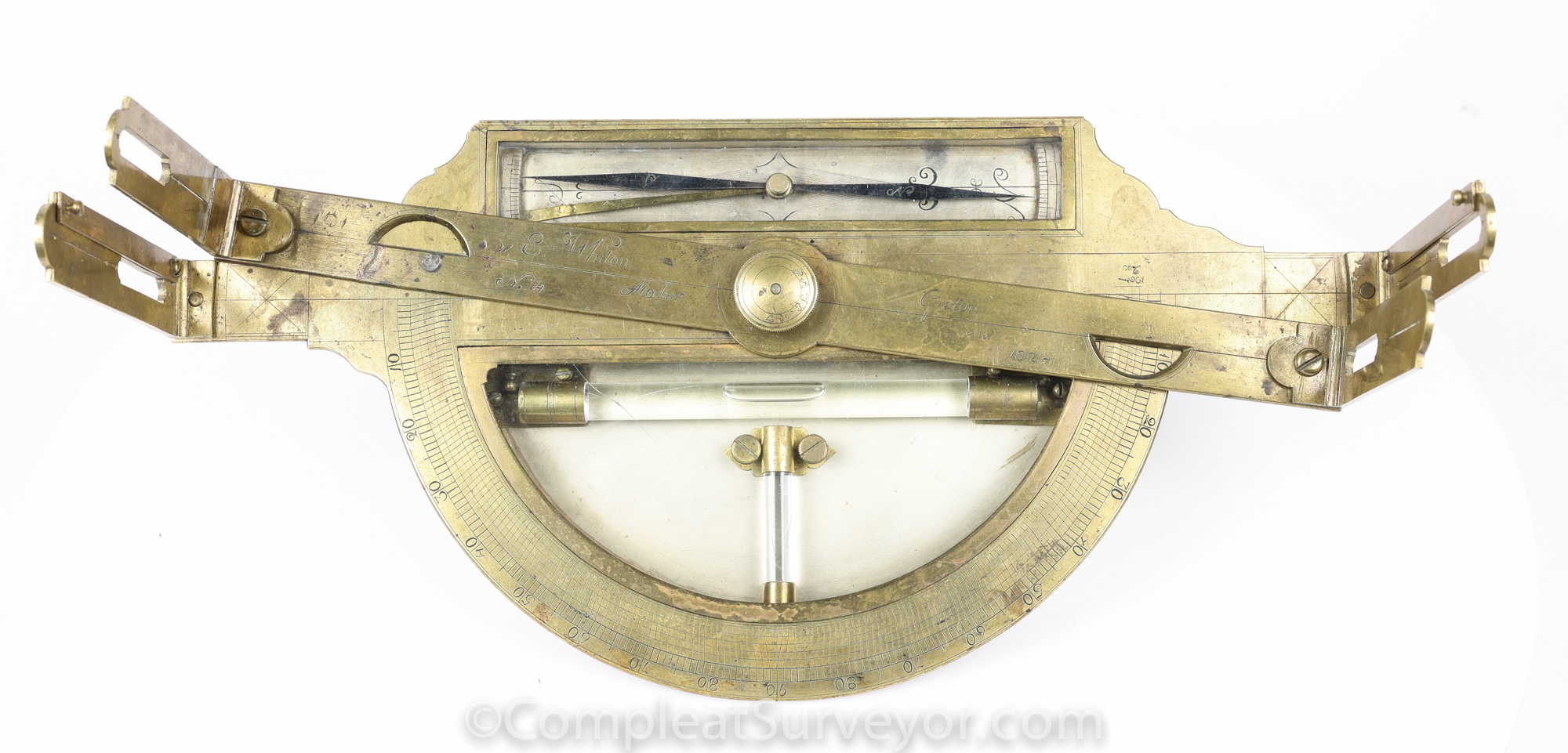
A wonderful SemiCircumferentor made by Whiton in 1824 - Serial Number 4. Offered for sale here.
Early American Newspaper Ads Involving Semicircles
Dabeny 1741
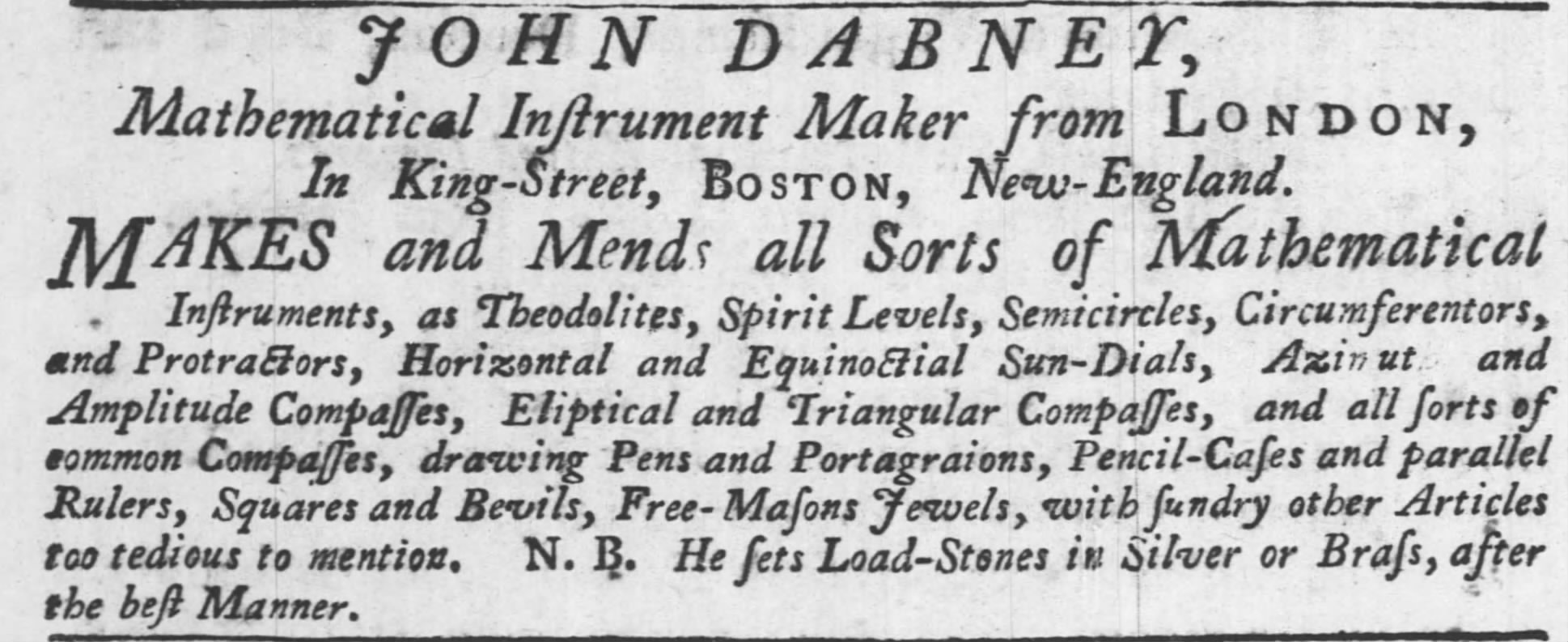
1742 Ben Frankin Semi


I nearly fell out of my chair when I realized that Ben Franklin offered a SemiCircle for sale in 1742.
Stephen Greanleaf 1785

Clark 1785
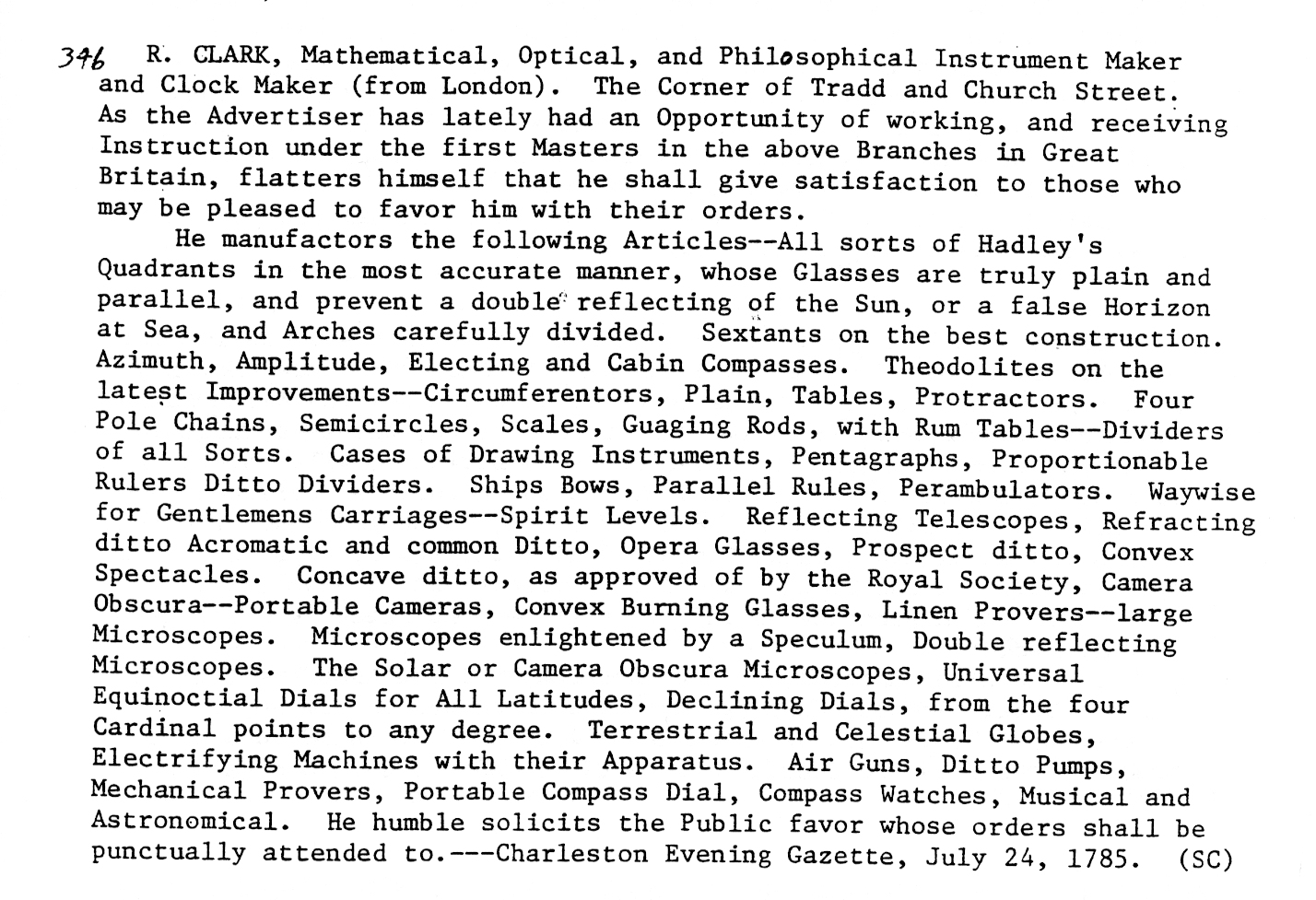
1812 Teacher Advertisement

Some Historical SemiCircumferentor Transactions
Historically, you could pick up a decent unsigned c1800 Semi for about $500. That seems like a bargain for an American made surveying instrument. Collectors paid $6k and above for really nice Semis with a known maker that were really old, highly engraved (e.g., with a transversal), and otherwise differentiated in some way as shown in a few pics above.
Below are a handful of the more interesting offerings in the $400 to $2k range I came across.
Mid 1970 Moskowitz Ad
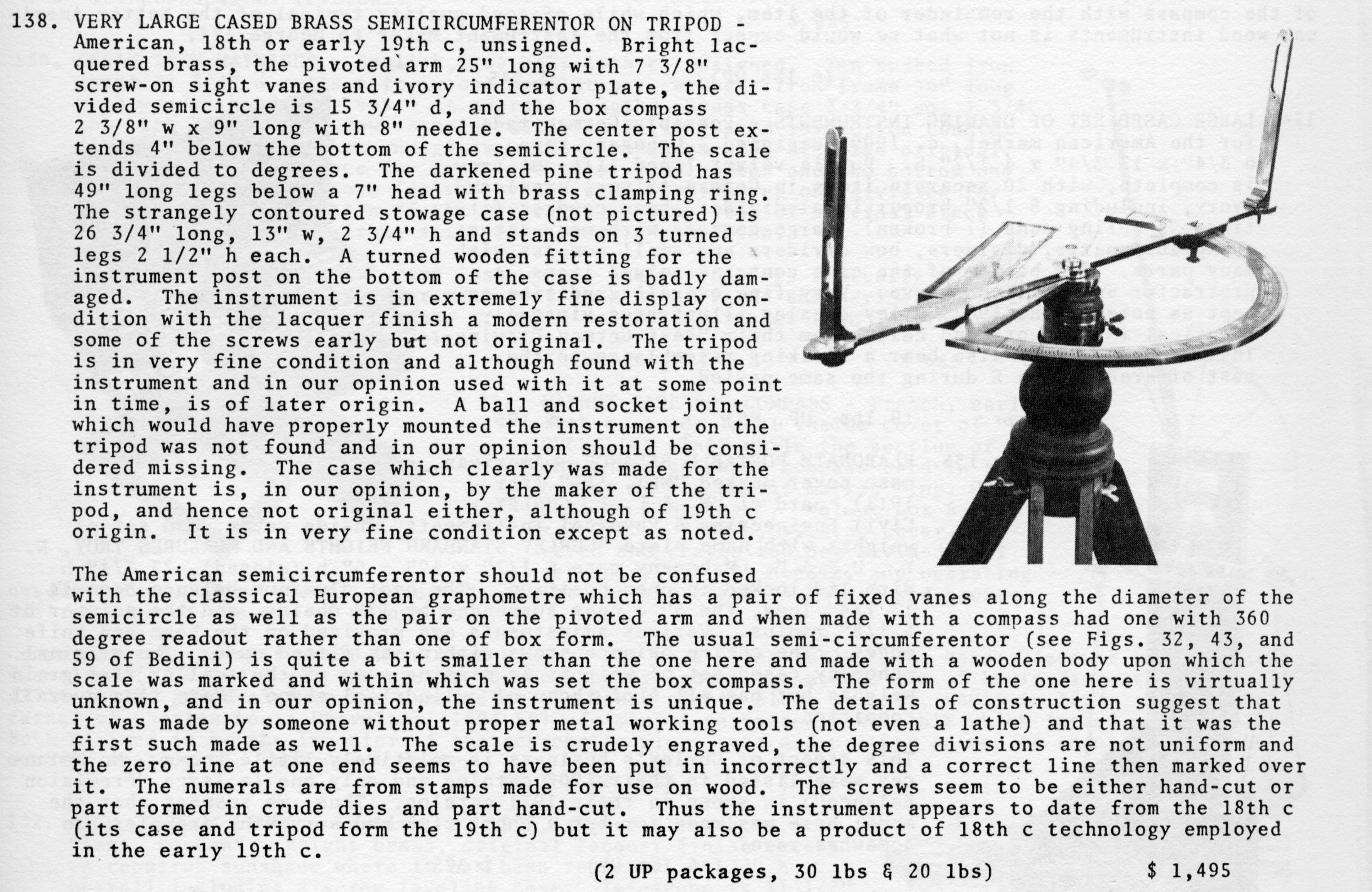
1983 Tesseract Ad
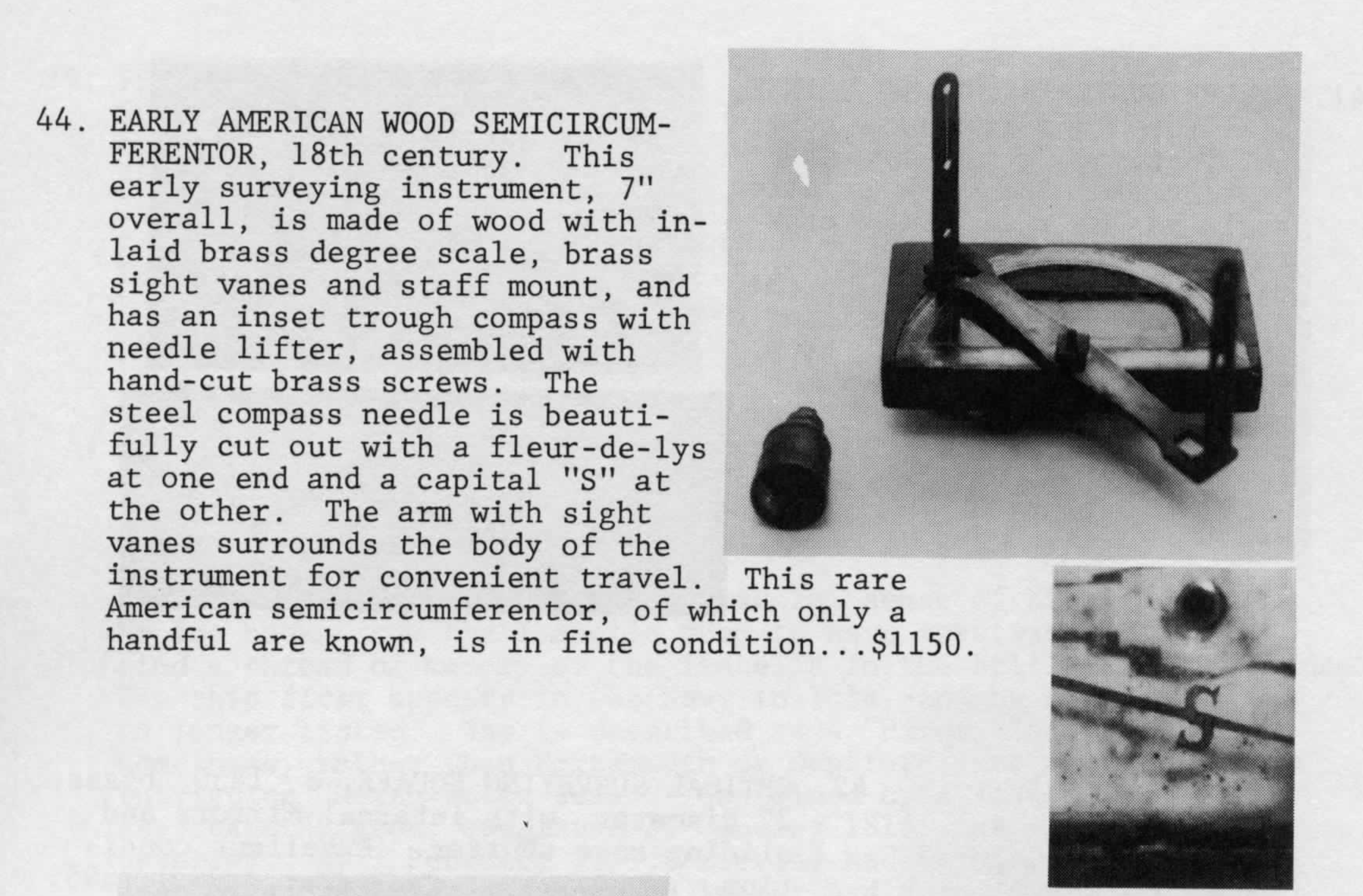
1993 Tesseract Ad
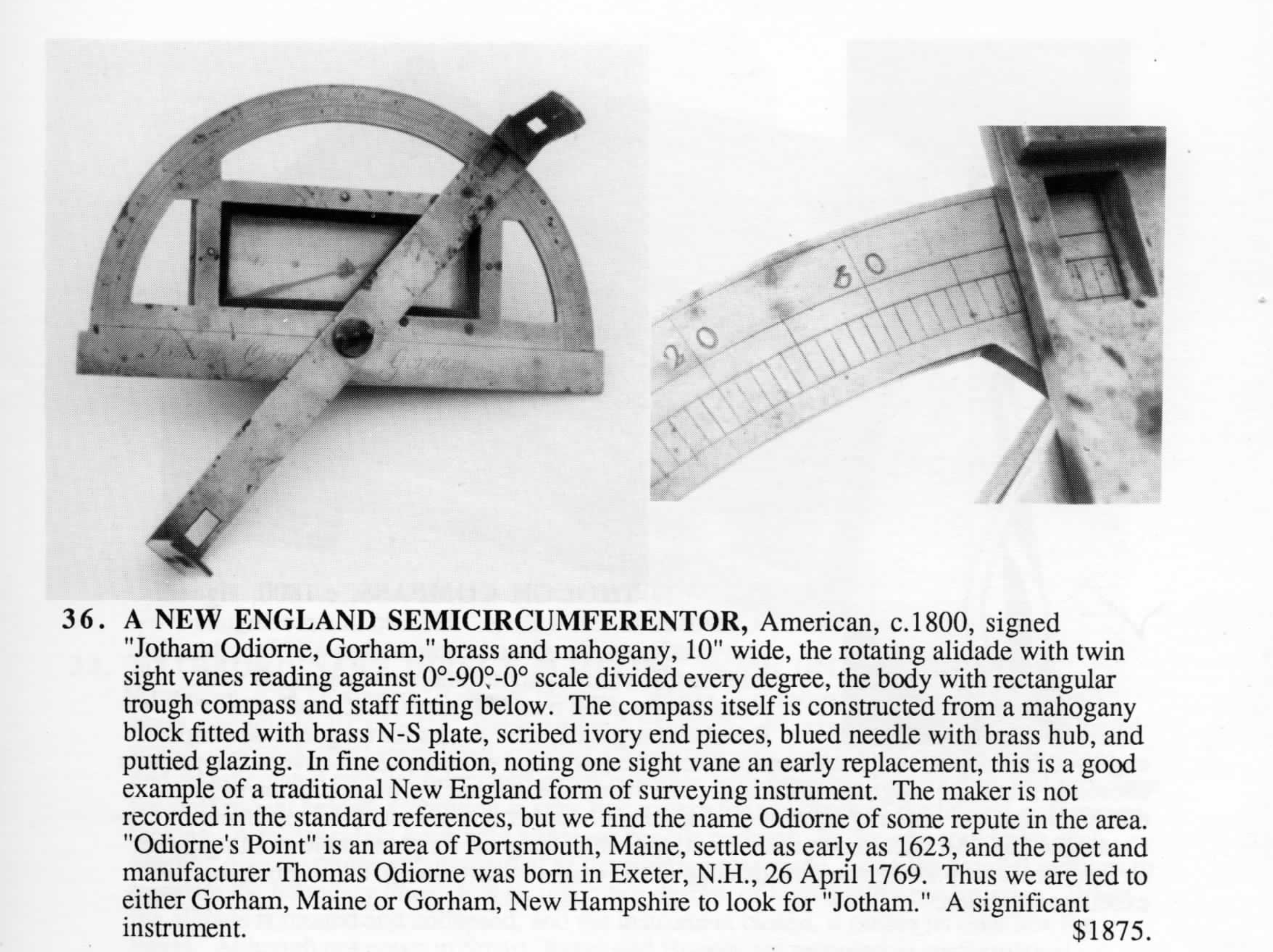
1997 Skinner Auction
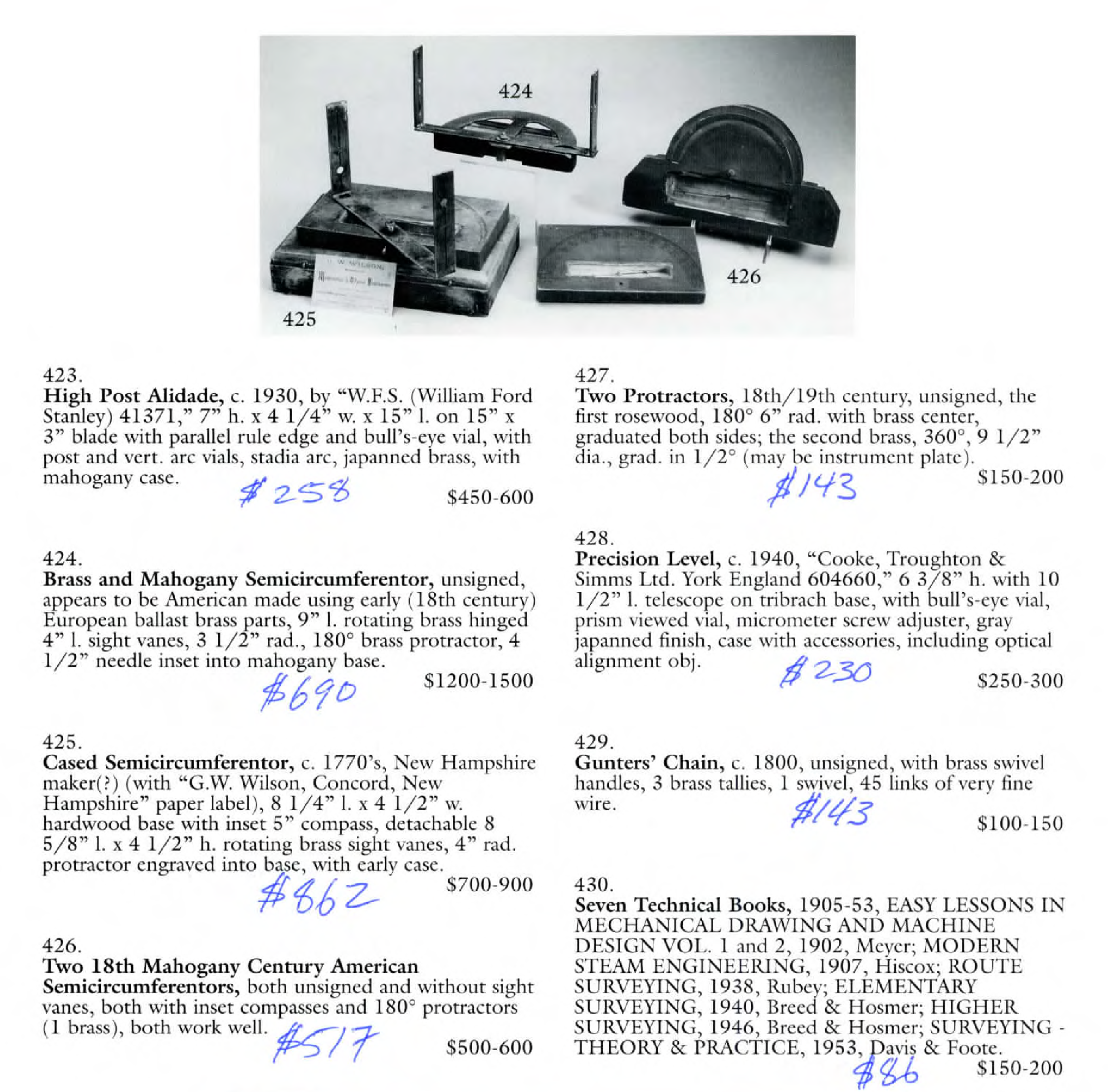
2004 Skinner Auction
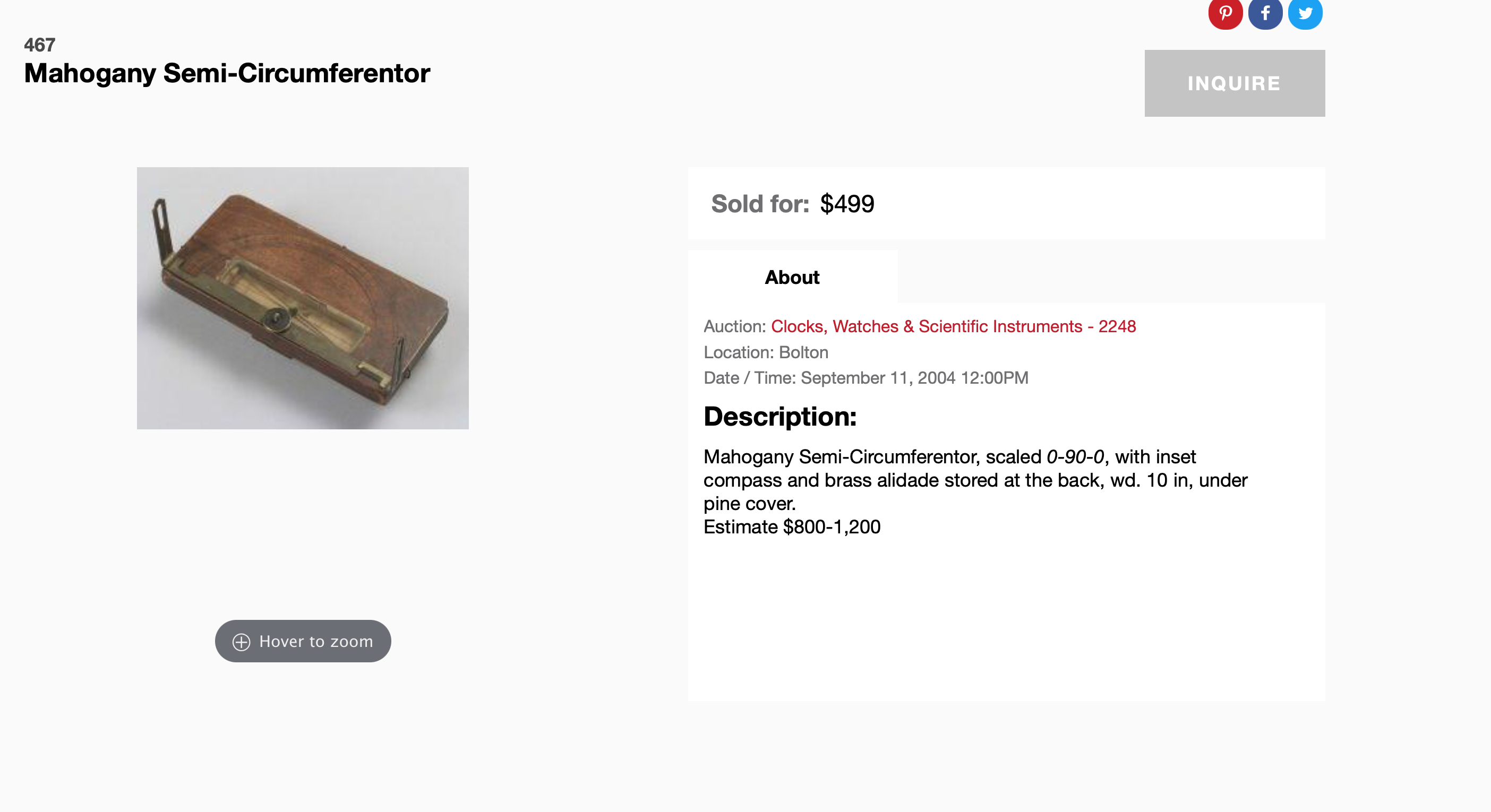
2004 Skinner Auction
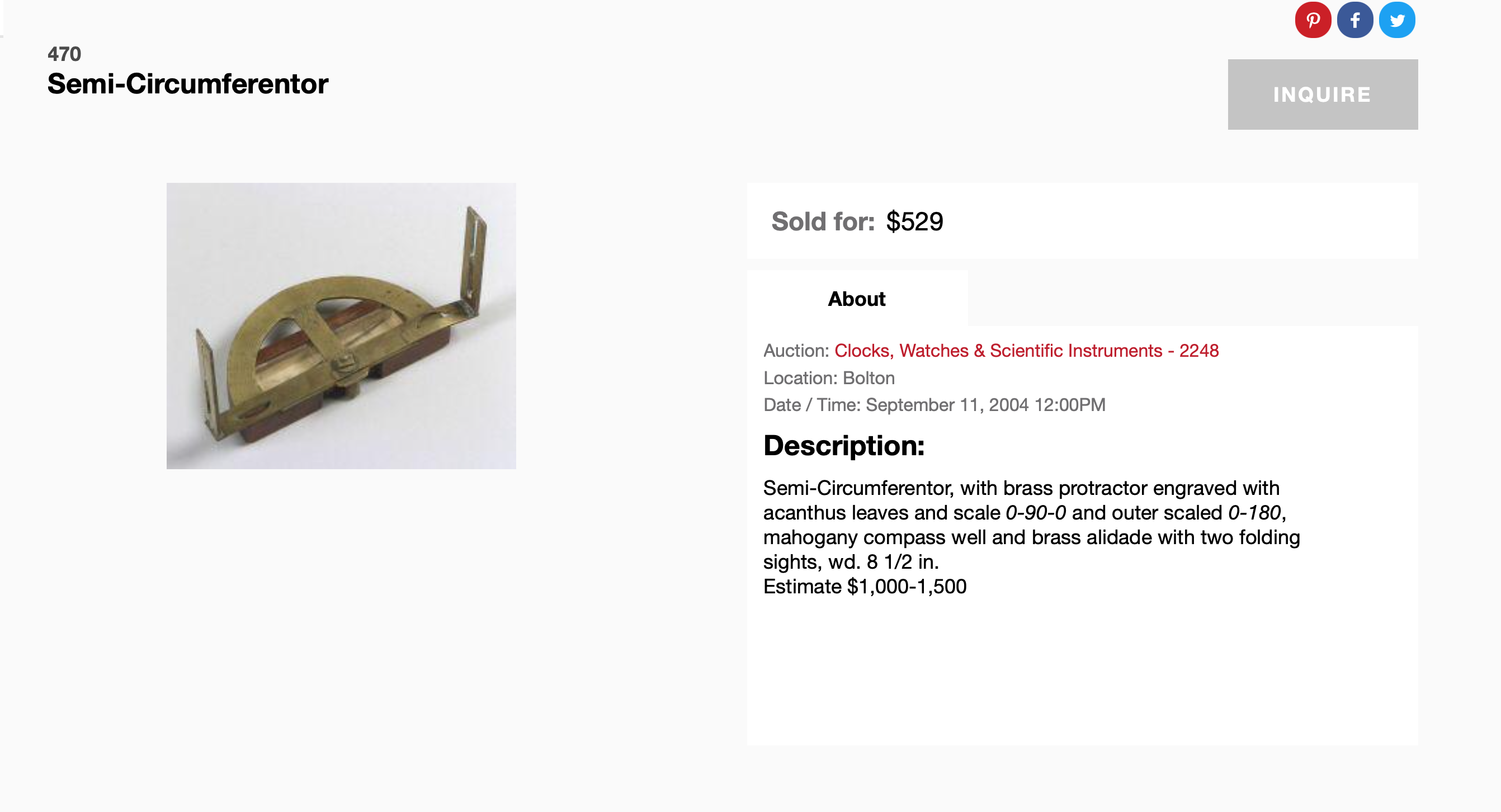
2005 Skinner Auction
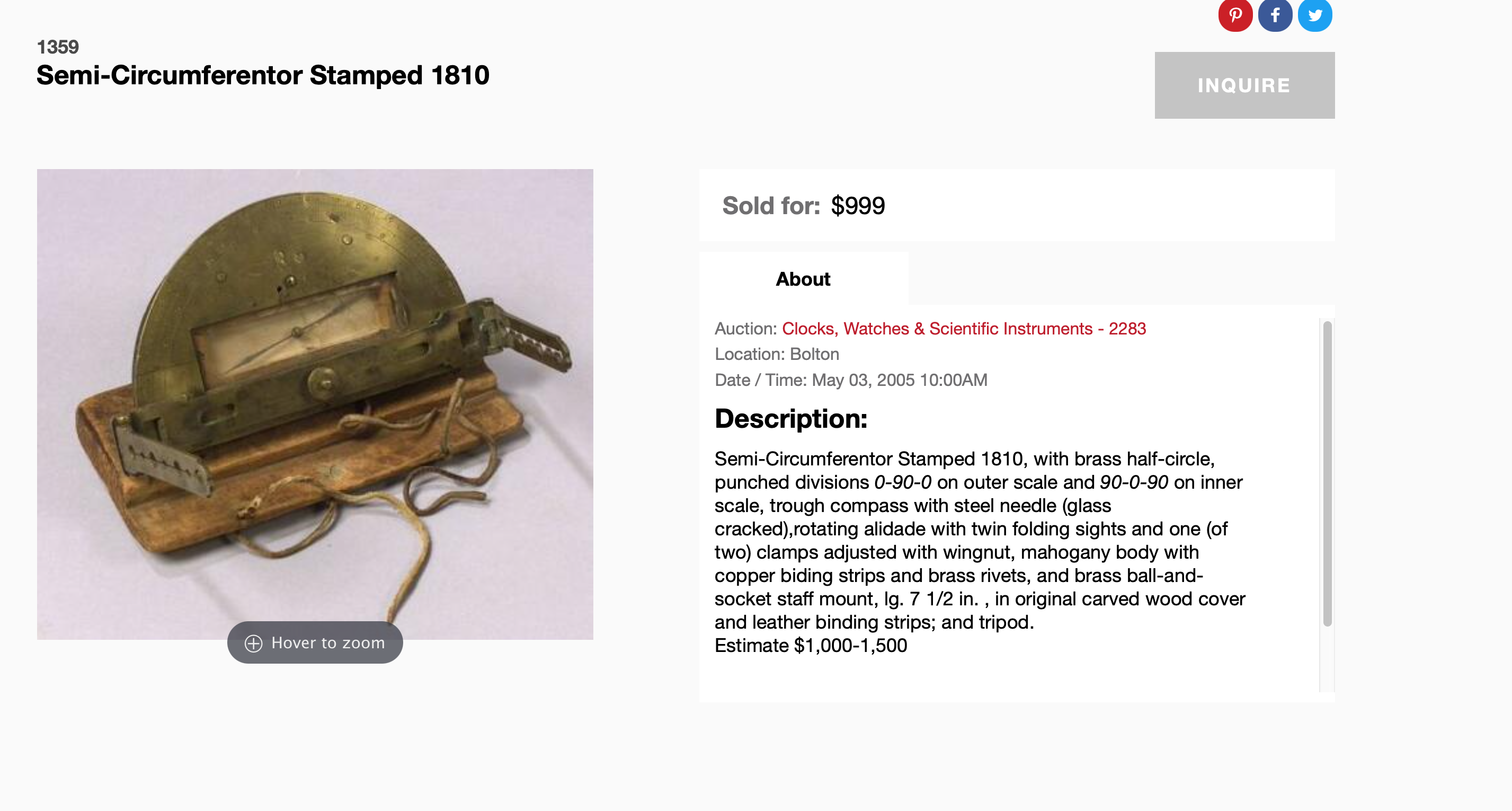
2010 Auction

2016 Ebay Auction
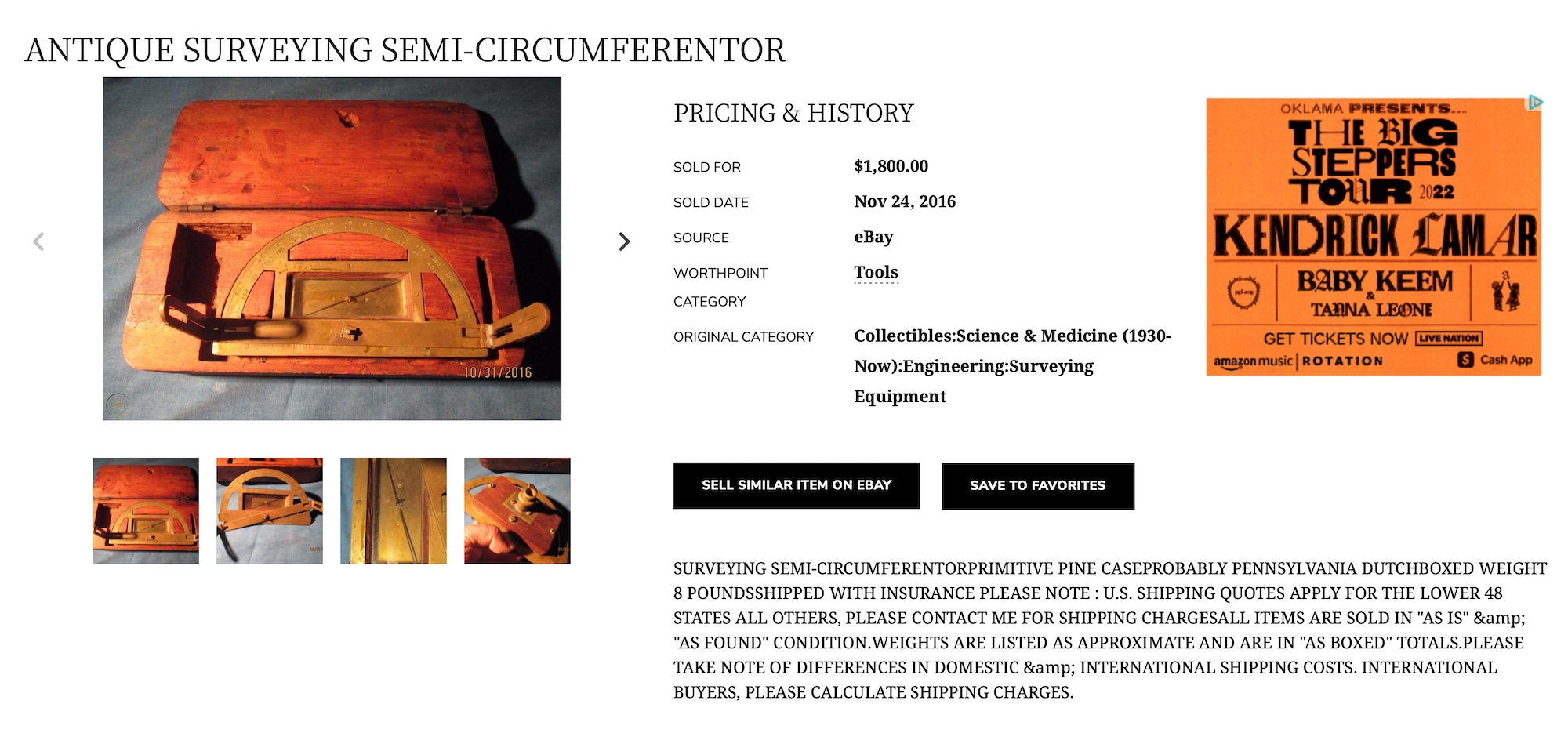
2017 Skinner Auction
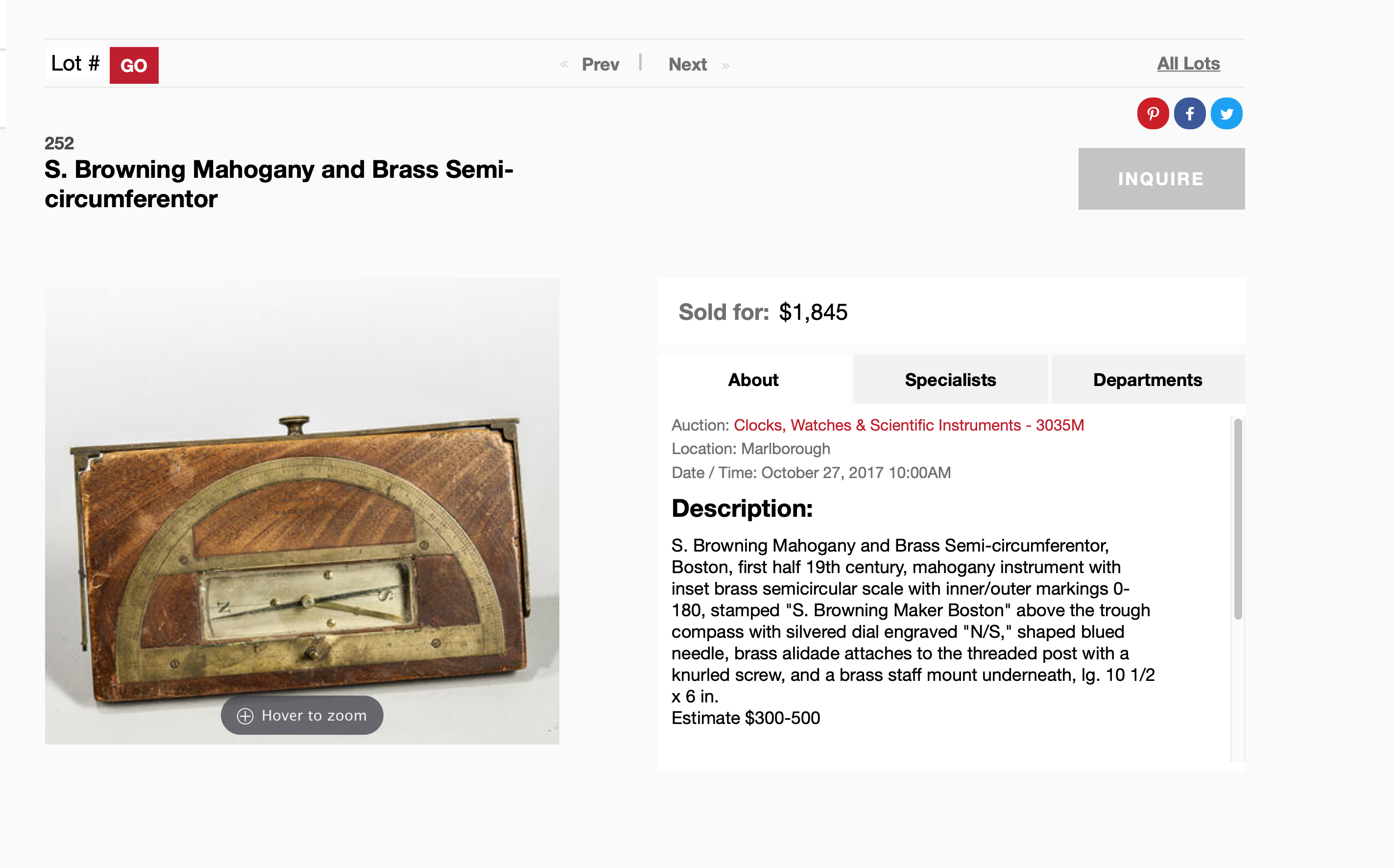
© 2020 Russ Uzes/Contact Me